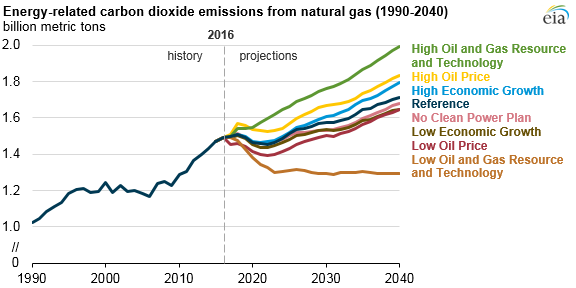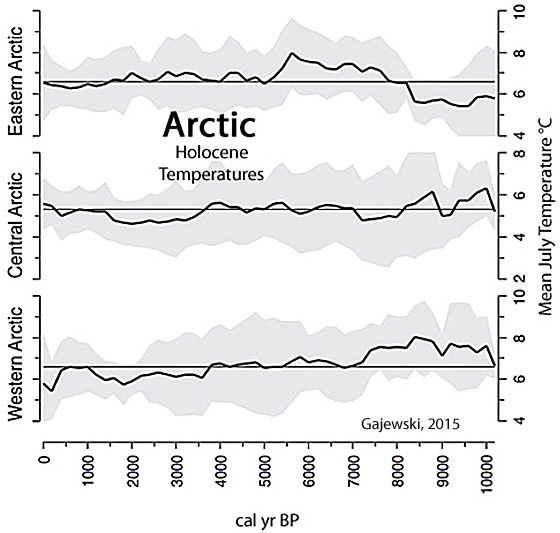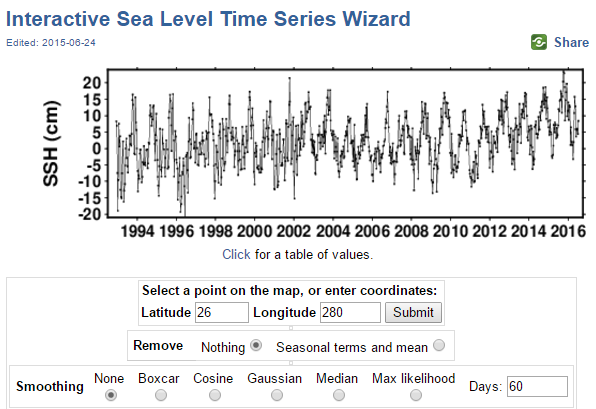No takers yet on French President Macron’s plea for climate scientists to move to France to Escape Trump
French President Emmanuel Macron urged U.S. climate scientists during his campaign to move to France, but so far it doesn’t appear that anyone has taken him up on his offer.
Mr. Macron posted a video in February taking a swipe at President Trump on global warming and welcoming to France “American researchers, entrepreneurs, engineers working on climate change.”
“The message for you guys: Please come to France. You are welcome. It’s your nation. We like innovation. We want innovative people. We want people working on climate change, energy, renewables and new technologies,” said Mr. Macron in English. “France is your nation.”
Even though Mr. Macron handily defeated Marine Le Pen in the May 7 presidential runoff, so far no U.S. climate researchers have declared their intention to flee to Paris.
“I have not heard of a single one taking up the offer as of yet,” said Climate Depot’s Marc Morano. “Perhaps the climate scientists here in the U.S. are still enjoying their academic perks, steady funding and endless media adoration. There does not seem to be too much of a reason they would want to leave.”
In the widely viewed video, Mr. Macron warned that Mr. Trump “has decided to jeopardize your budget, your initiatives, as he is extremely skeptical about climate change. I have no doubt about climate change and how committed we have to be regarding this issue.”
Prof. Roger Pielke Jr.: ‘Trump pulls out of Paris, Trump wins. Trump stays in, Trump wins’
Dr. Roger Pielke Jr.
Excerpts:
Will he or won’t he? There has been much discussion of whether President Trump keeps the US in the Paris Agreement. If we are having this debate then Trump has already won.
Much of climate debate (at least in the US) is about symbols, and Trump has roundly routed his opponents on this turf
So think of the Paris Agreement not as a policy framework, but rather as a potent political symbol.
As a symbol, here is how the politics works: Trump pulls out of Paris, Trump wins. Trump stays in, Trump wins. Fun game, huh?
In a perceptive piece @jmcurtin writes: “The only White House climate debate is between those who want to use the Paris climate agreement as a branding and lobbying opportunity, and those who favour leaving it altogether.”
Similarly, President Trump has made a big deal of reversing Obama’s Clan Power Plan. This too is a symbolic action. According to EIA, the impact of the CPP is pretty marginal:
- In fact, its projected impact of the CPP is far less than market prices for fossil fuels, again according to EIA:

- Consider that the CPP would likely have been tied up in the courts during a Hilary Clinton administration and you get … symbolism.
- Advocates for more aggressive climate action should use the opportunity afforded by the Trump presidency to fundamentally rethink climate policy in a way that would be politically robust.
- Did the recent Science March help to bring people together? Early evidence says: probably not.
- After failing to get Bret Stephens fired from the New York Times, the nation’s leading climate scientist, Michael Mann (@MichaelEMann) has focused his vitriol on cartoonist Scott Adams, of Dilbert fame (@ScottAdamsSays).
- I can’t believe I just wrote that. (Seriously, if you are not yet blocked by Mann, go over and read his Twitter feed for a glimpse into the world view of the nation’s most important climate scientist.)
- Pro tip: If you don’t want to be viewed as analogous to a religious fundamentalist, don’t go after cartoonists.
…
- Here is an interesting paper on how science assessments treat minority or divergent views (not well).
- Are low-energy light bulbs now in such wide use that they are influencing total US energy use? These guys think so.
- A new paper in Science suggests that the notion of
15 New 2017 Papers: Scientists Abandoning Claims Of Dominant Man-Made Influence On Arctic Climate

Natural Forcing Of Arctic Climate
Increasingly Affirmed By Scientists

Gajewski, 2015
Three years ago a cogent paper was published in the prestigious scientific journal Nature that was surprisingly candid in its rejection of the position that the substantial warming and sea ice reduction in the Arctic occurring since the late 1970s should be predominantly attributed to anthropogenic forcing.
Dr. Quinhua Ding and 6 co-authors indicated in their paper that internal processes — natural variability associated with planetary waves and the North Atlantic Oscillation — are drivers of the recent Arctic warming and sea ice reduction, concluding that “a substantial portion of recent warming in the northeastern Canada and Greenland sector of the Arctic arises from unforced natural variability.”
Ding et al., 2014
“Rapid Arctic warming and sea-ice reduction in the Arctic Ocean are widely attributed to anthropogenic climate change. The Arctic warming exceeds the global average warming because of feedbacks that include sea-ice reduction and other dynamical and radiative feedbacks. We find that the most prominent annual mean surface and tropospheric warming in the Arctic since 1979 has occurred in northeastern Canada and Greenland. In this region, much of the year-to-year temperature variability is associated with the leading mode of large-scale circulation variability in the North Atlantic, namely, the North Atlantic Oscillation.”
“Here we show that the recent warming in this region is strongly associated with a negative trend in the North Atlantic Oscillation, which is a response to anomalous Rossby wave-train activity [planetary waves related to the Earth’s rotation] originating in the tropical Pacific. Atmospheric model experiments forced by prescribed tropical sea surface temperatures simulate the observed circulation changes and associated tropospheric and surface warming over northeastern Canada and Greenland. Experiments from the Coupled Model Intercomparison Project Phase 5 models with prescribed anthropogenic forcing show no similar circulation changes related to the North Atlantic Oscillation or associated tropospheric warming. This suggests that a substantial portion of recent warming in the northeastern Canada and Greenland sector of the Arctic arises from unforced natural variability.”
Since 2014, there have been several more scientific papers that have been published documenting the significance of natural forcing processes in the Arctic and how they may override a clear detection of an anthropogenic influence.
But 2017 already seems to be an exception. Papers that document the dominance of natural forcing —
New Video: Tony Heller debunks ‘superstition’: ‘Is Manhattan Going To Drown Due To Global Warming’
GREEN LOBBY CALLS FOR $300 BILLION ANNUAL CLIMATE FUND
GREEN LOBBY CALLS FOR $300 BILLION ANNUAL CLIMATE FUND
With money for action on climate change already in short supply, an estimated $300 billion a year needed to help countries deal with unavoidable climate losses will have to come from innovative new sources, such as a financial transaction tax or carbon tax, researchers say.
Funding for such climate “loss and damage” aims to assist people who lose their land to sea level rise, for instance, or are forced to migrate as drought makes growing crops impossible in some regions.
“What stands out most clearly is that there isn’t currently enough funding to even begin thinking about financing loss and damage, with available climate, development, risk reduction and disaster recovery financing all falling short by an order of magnitude,” said researchers at the Berlin-based Heinrich Böll Foundation.
In a report released at the U.N. climate negotiations in Bonn, now heading into their second week, researchers said about $50 billion a year would be needed by 2020 to help people who lose their land and culture or are forced to migrate as a result of climate-related problems.
That need would likely hit at least $300 billion a year by 2030, said report authors Julie-Anne Richards, who works in the foundation’s climate justice programme, and Liane Schalatek, the foundation’s North America associate director.
Such spending would come on top of $100 billion a year in funding by 2020 that richer nations have already promised poorer ones under the Paris Agreement to help them develop cleanly and adapt to the impacts of climate change.
But that pledge is “very unlikely” to be met, the report said, with U.S. President Donald Trump, for instance, saying he will not hand over $2 billion in U.S. payments promised to the international Green Climate Fund.
To find new cash to pay for “loss and damage”, innovative financing such as a new carbon tax, aviation tax or financial transaction tax should be considered, the authors said. Such money “could fairly and predictably fill much of the loss and damage finance gap”, the report said.…
Analysis Debunks Absurd Sea Level Rise Claims About South Florida
Guest post by David Middleton
Sea level rise isn’t something that only future generations will have to deal with. It’s already causing significant challenges. If you doubt that, check out what’s happening in Miami right now.
…
“Sea levels in South Florida could rise up to two feet over the next four decades”… No they can’t and this is not happening right now.
For sea level to rise “two feet over the next four decades,” it would have to accelerate to the pace of the Holocene Transgression:

Projected sea level rise through 2100 AD. Two feet of sea level rise over the next four decades would require a pace even faster than that required for 1 meter (~3 feet) of sea level rise by the end of this century. https://wattsupwiththat.com/2013/12/21/oh-say-can-you-see-modern-sea-level-rise-from-a-geological-perspective/
It would take an average rate of sea level rise nearly twice that of the Holocene Transgression for sea level to rise more than 1.5 meters (~5 feet) over the remainder of this century.
Sea level isn’t behaving any differently than it has throughout the Holocene.
 Sea level was 1-2 meters higher than it currently is during the Holocene Highstand. All of the sea level rise since 1700 is insignificant relative to the natural variability of Holocene sea levels.
Sea level was 1-2 meters higher than it currently is during the Holocene Highstand. All of the sea level rise since 1700 is insignificant relative to the natural variability of Holocene sea levels.
Sea level rise in the Miami area is not accelerating and it is rising at a rate of about 1 foot per century.

The mean sea level trend is 2.39 millimeters/year with a 95% confidence interval of +/- 0.43 mm/yr based on monthly mean sea level data from 1931 to 1981 which is equivalent to a change of 0.78 feet in 100 years. https://tidesandcurrents.noaa.gov/sltrends/sltrends_station.shtml?stnid=8723170

The mean sea level trend is 2.40 millimeters/year with a 95% confidence interval of +/- 0.15 mm/yr based on monthly mean sea level data from 1913 to 2016 which is equivalent to a change of 0.79 feet in 100 years. https://tidesandcurrents.noaa.gov/sltrends/sltrends_station.shtml?stnid=8724580

The mean sea level trend is 3.63 millimeters/year with a 95% confidence interval of +/- 0.48 mm/yr based on monthly mean sea level data from 1971 to 2016 which is equivalent to a change of 1.19 feet in 100 years. https://tidesandcurrents.noaa.gov/sltrends/sltrends_station.shtml?stnid=8723970
The satellite data indicate virtually no statistically significant sea level rise in the Miami area:

CU Sea Level Research Group University of Colorado http://sealevel.colorado.edu/content/interactive-sea-level-time-series-wizard?dlat=26&dlon=280&fit=n&smooth=n&days=60
I intentionally retained the “seasonal terms and mean” and did not smooth the data because the seasonal variability is …
German Green Party Collapsing In ‘Existential Crisis’
Germany’s Green Party is collapsing and the party could lose all its seats in the national legislature, according to a Monday article in the magazine Der Spiegel. The Greens are polling very poorly in upcoming national elections scheduled for September, and the party doesn’t seem to have a plan to solve the problem, according to Der Spiegel.
Source: German Green Party Collapsing In ‘Existential Crisis’…
